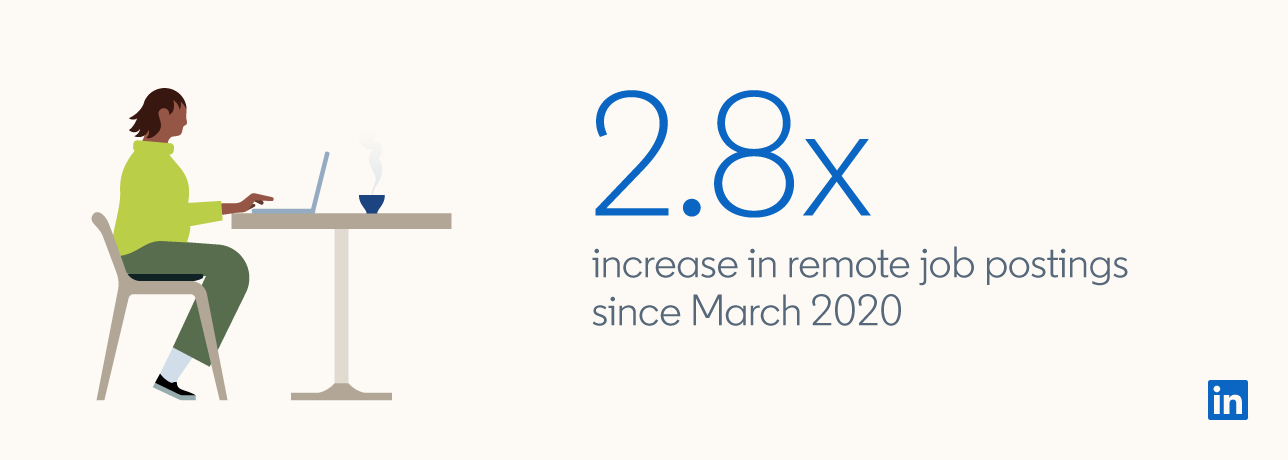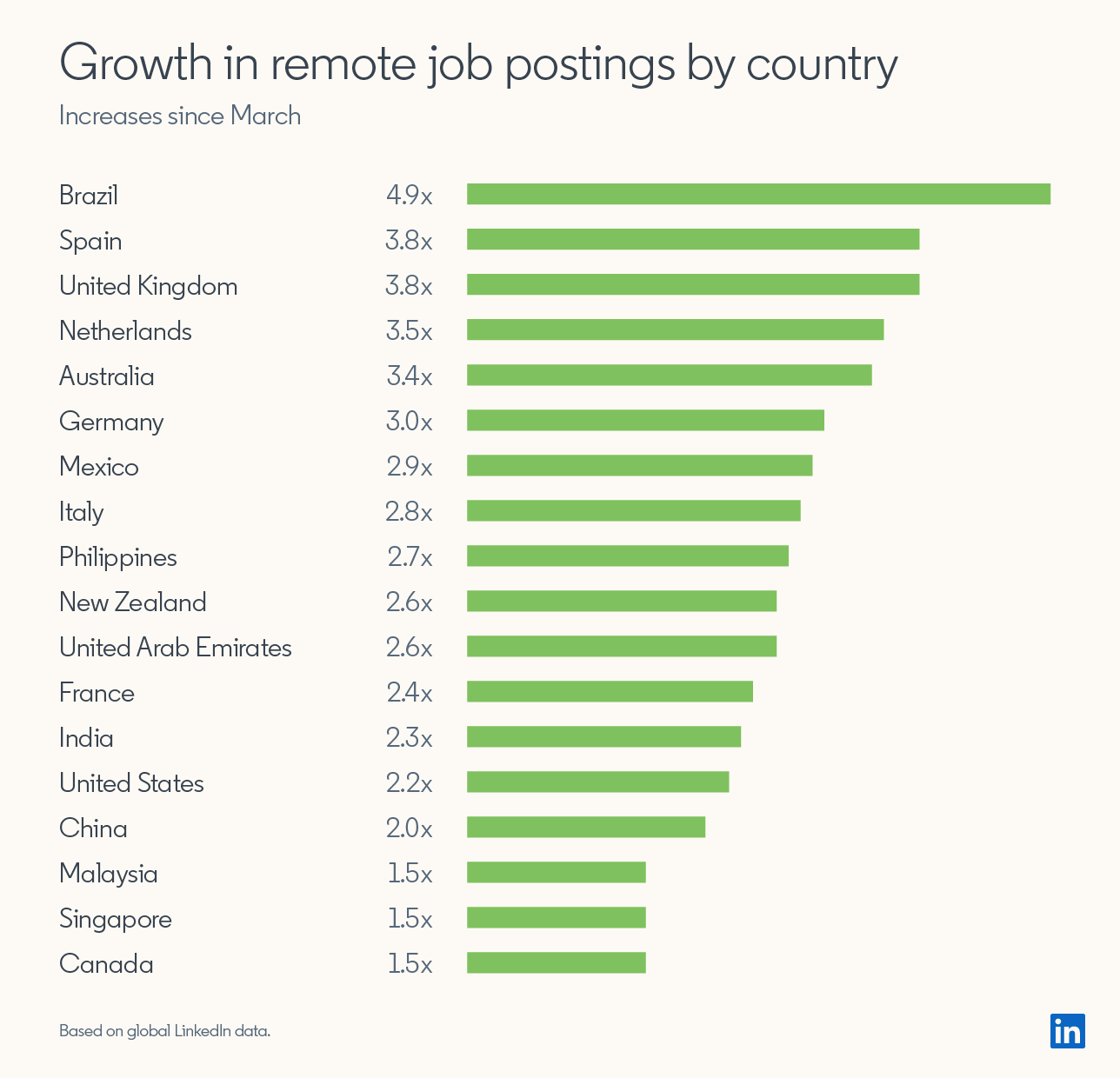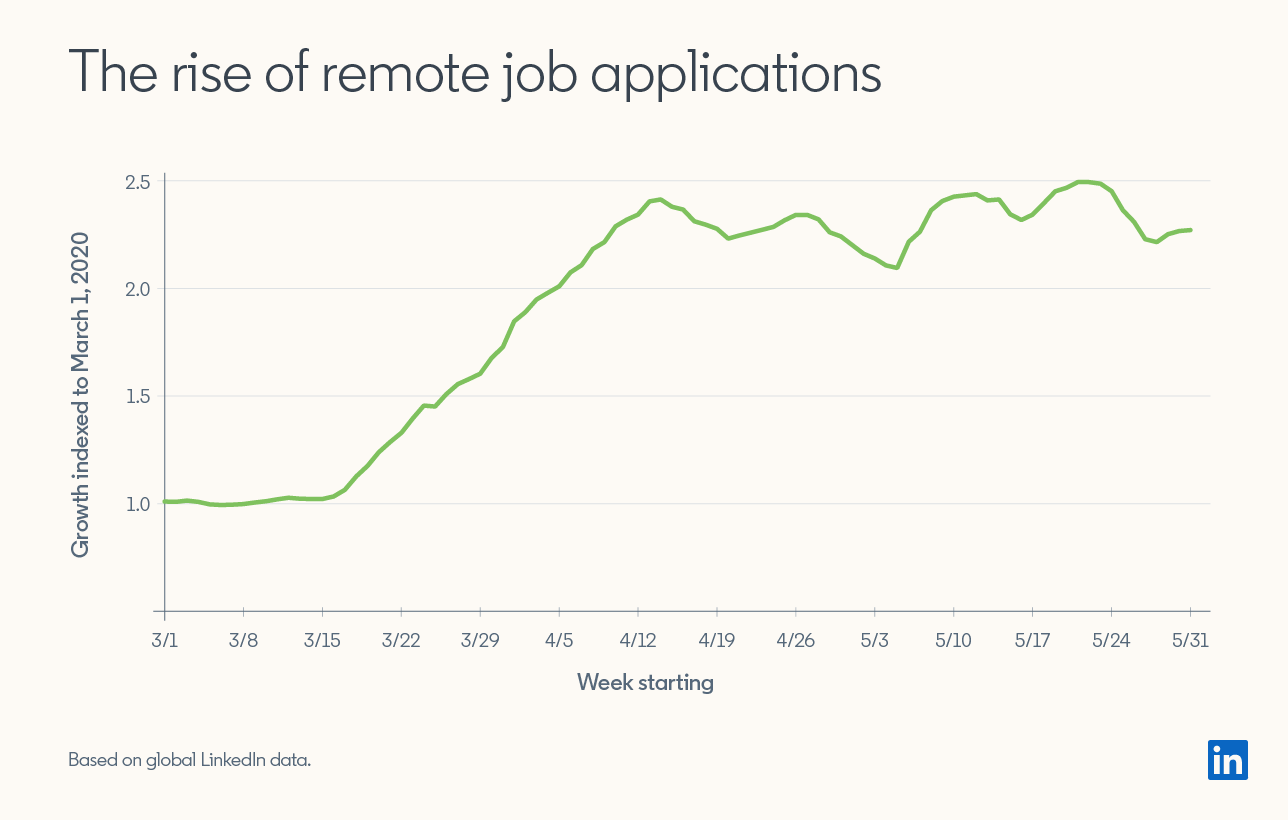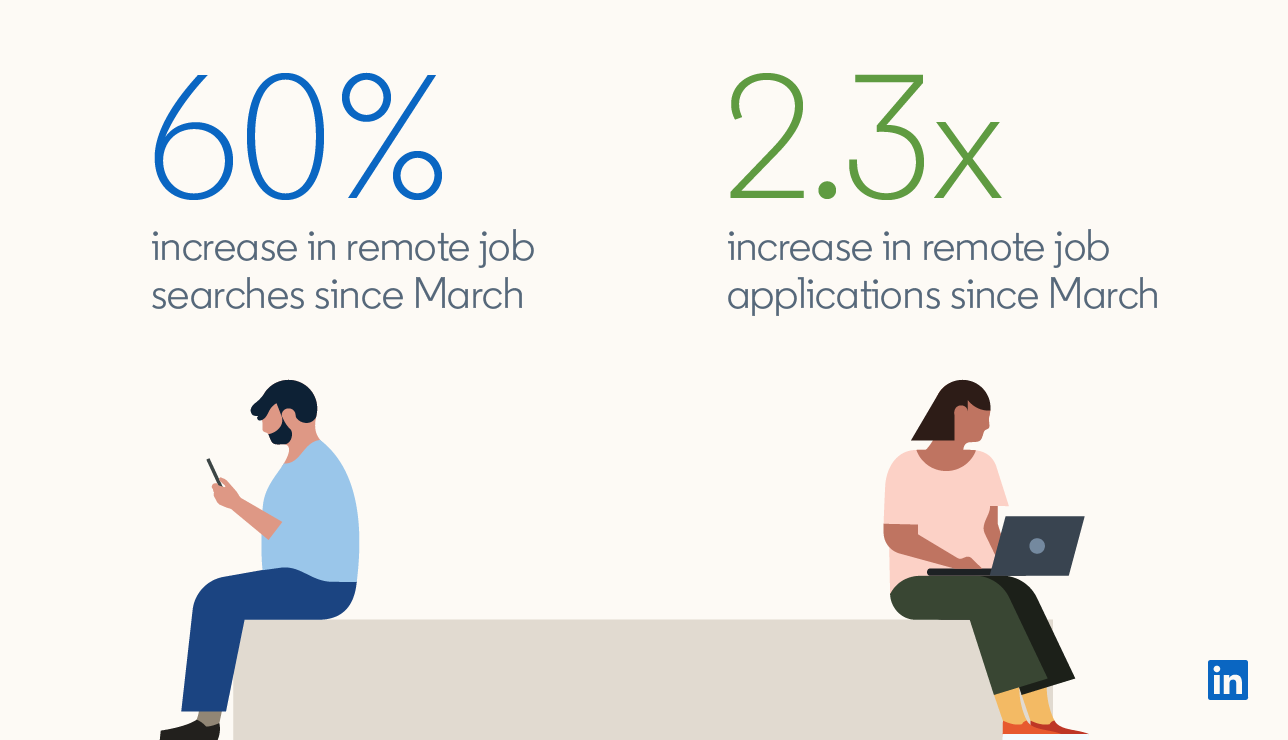
There’s been a range of approaches — some companies have labeled their new postings "temporarily remote due to COVID-19." Others have begun shifting roles to permanently remote because temporary was so successful. Still, others have made remote optional, or at least are committing to it despite uncertainty around the details.
The spike in remote jobs is global
All 18 countries in our analysis saw a jump in remote postings, ranging from Canada’s 1.5x increase to Brazil’s 4.9x. In general, European and Latin American countries had the greatest growth while North American and Asian country's growth was relatively lower.
Remote job searches are up 60%, applications have more than doubled
On the job-seeking side, we’re seeing more interest in remote roles — searches have increased by 60% and applications have jumped 2.3x. A few factors are likely at play. Now that more people have experienced the benefits of working remotely, they want the option, especially while the pandemic is still going on. Working from home is less stigmatized now — people have gotten used to cats in webcams and kids interrupting important meetings. Those in lockdown may also simply be searching according to what’s allowed where they live. Finally, many companies have increased their remote roles, so job-seekers are naturally discovering and applying to more of them.
Job-seekers are flocking to remote roles in customer service, tech, and marketing
Globally the top remote jobs with the biggest increases in applications span customer service, technology, and marketing, with recruiting and creative roles in the mix as well. The biggest jump in applications is for the remote role of Customer Service Representative (+112%), with its related role Call Center Representative at 39% growth. The increases in all roles are likely due to both increasing job-seeker interest as well as a greater supply of remote postings.
Final thought
As a result of COVID-19, more organizations and workers are choosing to work remotely. The full implications remain to be seen, but the longer everyone experiments with it, the more likely they’ll embrace it long-term.
Co-authored by Kate Reilly.
Methodology
- LinkedIn analyzed data from March 1st, 2020 to May 31, 2020 to understand how remote job postings and job- seeker behavior has changed due to COVID-19. To improve the precision of analysis, only full-time jobs that were premium listings were considered.
- To identify Remote Job Postings and Remote Job Searches, LinkedIn used the built-in Remote filters and a number of keywords (i.e. ‘remote work’, ‘work from home’, home-office’) in 10 different languages.
- Uplifts in remote job posts, views and applications were calculated using changes in % shares of Total to normalize for platform growth. Then 7-day smoothed proportions were indexed to March 1st, 2020.
- For most applied to remote jobs, LinkedIn examined all remote jobs that received applications, and ranked them by the growth in share of all job applications submitted in 2020, from before and after March 1st, 2020.





